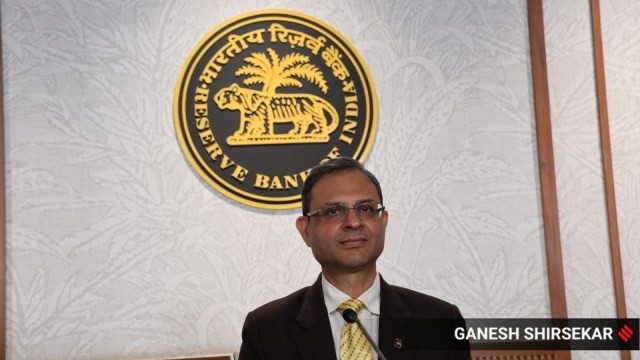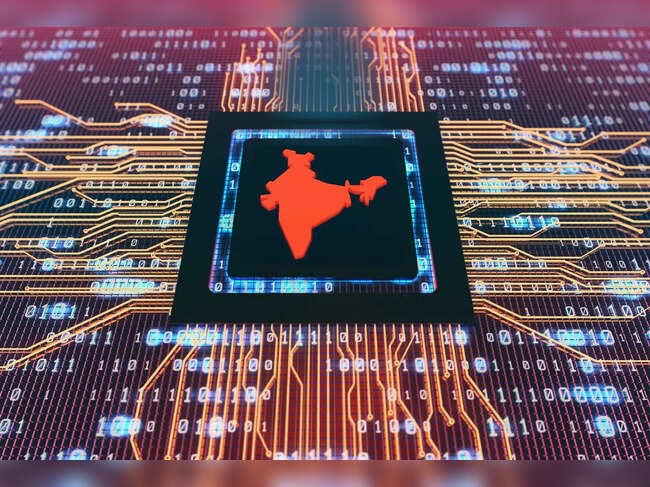



The Reserve Bank of India (RBI) is promoting the adoption of Central Bank Digital Currency (CBDC) over Stablecoins to ensure monetary stability and reduce risks of dollarisation. CBDCs, being sovereign digital money, offer secure and efficient payment systems, while privately issued Stablecoins pose regulatory and financial challenges. India’s Digital Rupee pilot projects—both retail and wholesale—are progressing steadily, aligning with global trends where over 130 countries are exploring CBDCs. The way forward lies in strong regulation, international coordination, and technological innovation to balance financial security and digital transformation.

Copyright infringement not intended
Picture Courtesy: Indian Express
At the annual meeting of the World Bank Group and the International Monetary Fund (IMF) in Washington, DC, Reserve Bank of India (RBI) Governor Sanjay Malhotra called on central banks worldwide to adopt and promote Central Bank Digital Currencies (CBDCs) instead of stablecoins for facilitating cross-border transactions.
A CBDC is a digital version of a country’s official currency, issued and regulated by its central bank (like the Reserve Bank of India). It is legal tender, meaning it has the same value and backing as paper currency or coins.
Stablecoins are a type of cryptocurrency whose value is pegged to a stable asset, like a fiat currency (e.g., US dollar) or a commodity (like gold), to reduce volatility.
|
Feature |
CBDC |
Stablecoin |
|
Issuer |
Central Bank |
Private Company |
|
Legal Status |
Legal Tender |
Not Legal Tender |
|
Backing |
Fully backed by sovereign reserves |
Pegged to fiat or assets (often USD) |
|
Regulation |
Strict government oversight |
Limited or unclear regulation |
|
Example |
Digital Rupee (India) |
Tether (USDT), USD Coin (USDC) |
|
Period / Phase |
CBDC Evolution |
Stablecoin Evolution |
|
1980s–2000s: Early Concepts |
Central banks began exploring digital versions of sovereign currency (e.g., Finland’s Avant Card, 1993). The idea remained theoretical due to limited technology. |
No stablecoins existed; the focus was on traditional fiat and early digital payment systems like PayPal. |
|
2009–2013: Emergence of Digital Currencies |
The rise of Bitcoin (2009) highlighted the potential of blockchain-based money. Central banks began studying digital legal tender to retain control over monetary systems. |
Bitcoin’s volatility led developers to propose cryptocurrencies with stable value — laying the groundwork for stablecoins. |
|
2014–2018: Pilot & Innovation Phase |
People’s Bank of China (PBoC) started CBDC research in 2014; global institutions like IMF and BIS began policy discussions. |
First stablecoin Tether (USDT) launched in 2014, pegged to USD. Later, USDC and DAI emerged, creating a $10B+ market by 2018. |
|
2019–2020: Policy Acceleration |
Central banks accelerated CBDC pilots. China launched e-CNY (2019); Bahamas introduced Sand Dollar (2020) — the first official CBDC. |
Facebook’s Libra (2019) triggered global debate, pushing regulators to draft stablecoin rules. Market cap crossed $25B (2020). |
|
2021–2022: Institutional Adoption |
Over 90 central banks studied CBDCs. India announced Digital Rupee (Budget 2021). RBI began pilots in 2022 (Retail & Wholesale). |
Stablecoins like USDT, USDC saw massive adoption — over $180B market cap (2022). Used widely in DeFi and crypto trading. |
|
2023–2024: Regulation & Expansion |
CBDC pilots expanded — 130+ countries exploring (Atlantic Council, 2024). India tested CBDC in major cities and banks. |
Japan, UK, and Singapore introduced laws to regulate stablecoins. Global stablecoin supply exceeded $250B (2024). |
|
2025–Present: Integration & Coexistence |
RBI Governor Malhotra (2025) urged global promotion of CBDCs for cross-border payments, citing risks of dollar-linked stablecoins. India’s CBDC pilot scaled to more sectors. |
Stablecoins dominate global crypto transactions — USDT and USDC control 90% of the $285B market (CoinMarketCap, 2025). Regulatory clarity improving in US, South Korea, and Hong Kong. |
CBDC:
Stablecoins:
Source: Indian Express
|
Practice Question Q. Discuss the major differences between Central Bank Digital Currency (CBDC) and Stablecoins. Evaluate the challenges faced in their implementation and suggest measures to ensure financial stability. (250 words) |
A CBDC is a digital version of a nation’s fiat currency issued and regulated by the central bank. It has the same legal status as paper money and aims to improve payment efficiency.
CBDC is sovereign and backed by a country’s central bank, while Stablecoins are privately issued cryptocurrencies pegged to assets like the USD or gold. CBDCs are fully regulated; Stablecoins are often only partially supervised.
The RBI warns that large-scale use of USD-linked Stablecoins could “dollarise” the Indian economy, reducing monetary control and policy effectiveness.








© 2025 iasgyan. All right reserved